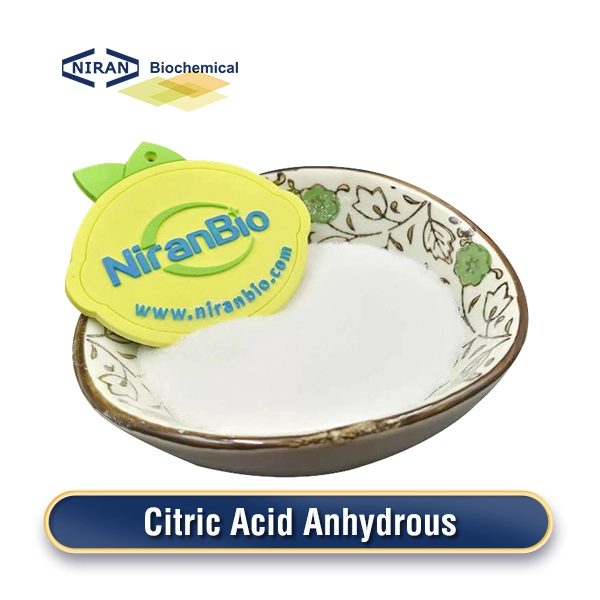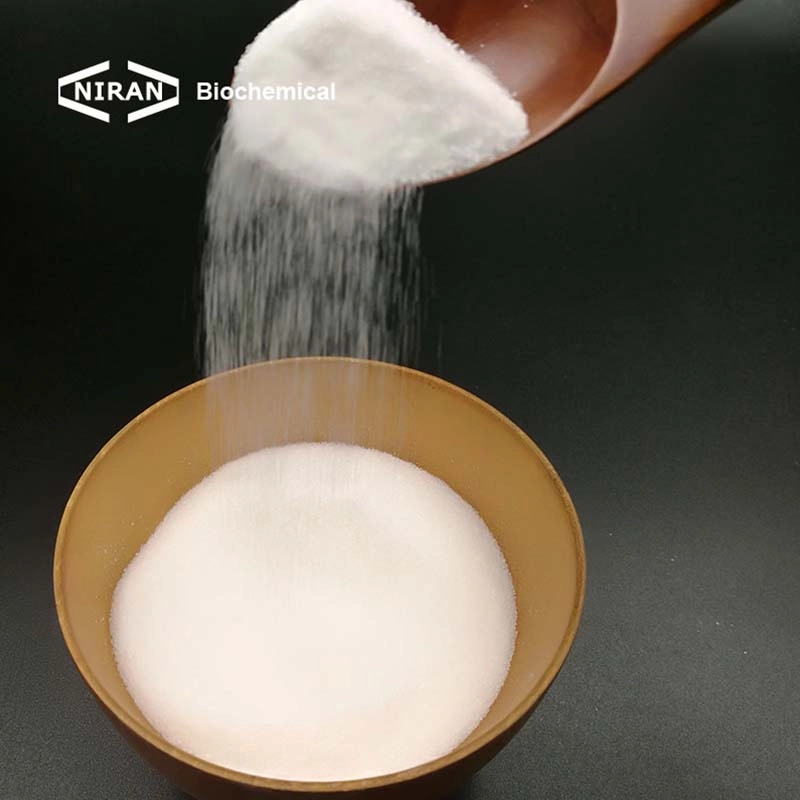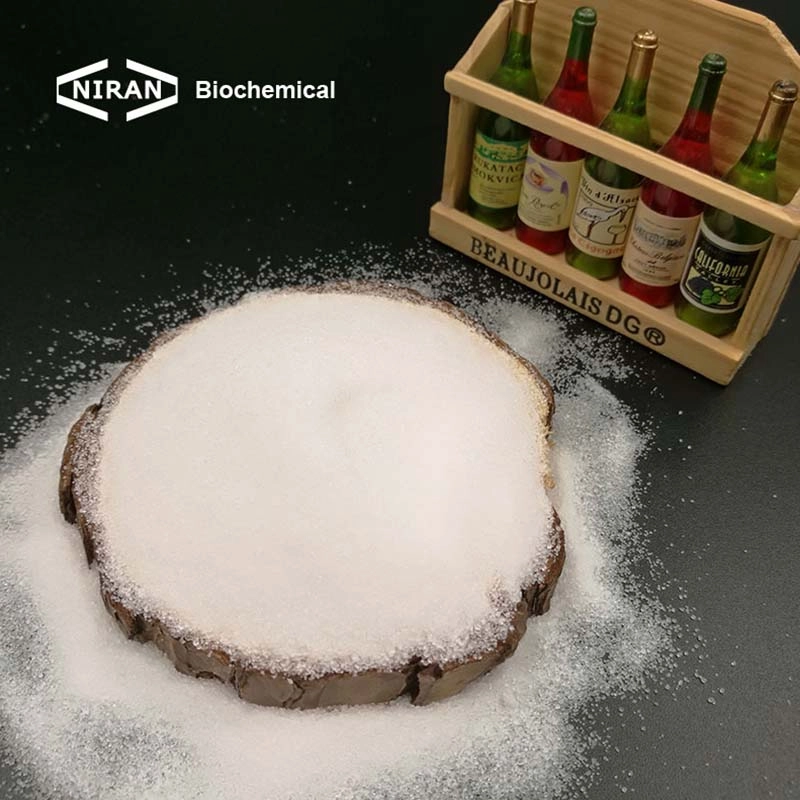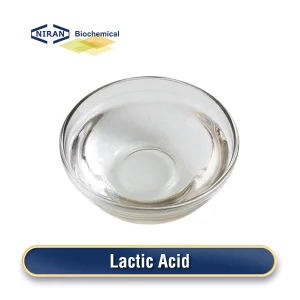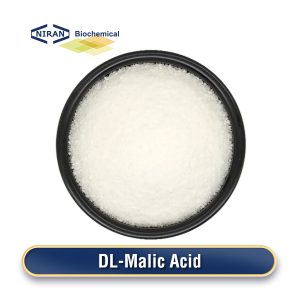Niran Biochemical
YOUR RELIABLE FOOD INGREDIENTS
Send Inquiry
Home » Products » Acidulants » Citric Acid Anhydrous
Citric Acid Anhydrous
- CAS: 77-92-9
- Chemical Formula: C6H8O7
- Certification: KOSHER, ISO, HALAL, FSSC22000, BRC, etc.
- Standard: BP/USP/FCC
- MOQ: 1000KG
- Shelf Life: 3 Years
Inquire Product
Product Description
What is citric acid anhydrous?
Citric acid anhydrous is a translucent crystal or white fine powder or crystal, with no obvious odor, a very sour taste, and easily soluble in water, alcohol, and ether. It exists naturally in citrus fruits such as lemons. When storing, it is necessary to protect it from light, keep it sealed, and keep it in a dry and cool place. It is mainly used as a food additive in the food industry. Not only that, anhydrous citric acid is also involved in other industries, such as the chemical industry, cosmetics industry, etc.
Citric acid anhydrous is a natural organic compound extracted from lemon peel. The common production process is raw material preparation (lemon peel) through squeezing extraction, oil-water separation, crystallization precipitation, water washing, drying until anhydrous citric acid is obtained, and then packaged and stored in a dry, cool, and ventilated place.
Related parameters:
| Items | Standards |
| Assay | 99.5%-100.5% |
| Moisture | ≤0.5% |
| Oxalic Acid | ≤100 ppm |
| Sulphate | ≤150 ppm |
| Residue on ignition (sulphated ash) | ≤0.05% |
| Heavy Metals | ≤10 ppm |
| Mercury | ≤1 ppm |
| Lead | ≤0.5 ppm |
| Arsenic | ≤1 ppm |
| Aluminium | ≤0.2 ppm |
| Bacterial Endotoxins | ≤0.5 IU/mg |
| Trilaurylamine | ≤0.1 ppm |
| Calcium | ≤200 ppm |
| Iron | ≤50 ppm |
| Chloride | ≤50 ppm |
Recommended dosage:
| Food Name | Maximum usage(g/kg) |
| Carbonated beverages | 0.3-0.6 g/kg |
| Starch products | 0.2-0.4 g/kg |
| Jelly | 0.3-0.6 g/kg |
| Salad dressing | 0.2-0.5 g/kg |
| Ice cream | 0.3-0.5 g/kg |
| Seasonings | 0.3-0.6 g/kg |
| Ham | 0.2-0.3 g/kg |
| Bread | 0.2-0.3 g/kg |
| Barbecued products | 0.3-0.5 g/kg |
| Quickly frozen foods | 0.2-0.4 g/kg |
Citric acid anhydrous has a wide range of uses
1. Food industry:
As a food additive, it is used as a flavoring agent and acidulant, especially in beverages, juices, canned foods, etc.
2. Pharmaceutical industry
It is used as a catalyst or acidifier in pharmaceutical processes to help adjust the pH of drugs.
3. Cosmetics
It can be used as an ingredient to adjust pH value, and it also has an antioxidant effect, commonly found in skin care products and cosmetics.
4. Other applications:
In industry, it is used as a component of cleaning agents or as part of water treatment agents.
User asked question:
Q: The difference between malic acid and citric acid:
A: 1. The raw materials are different. The raw materials of malic acid are fermented from fruits such as apples, while citric acid is made from fermented corn.
2. The chemical formula components are different, L malic acid, DL malic acid; monohydrate citric acid, and anhydrous citric acid.3. The effects are different. Malic acid has better functions such as promoting metabolism, while citric acid can promote digestion, beautify the skin, etc.
4. The taste of sourness is different. The sourness of citric acid has the characteristics of quickly reaching a high point and quickly decreasing, while the sourness of malic acid can be retained for a long time.
5. The taste is different. Citric acid is a pleasant acidifier; malic acid is a bitter acidifier.
Q: How do you store anhydrous citric acid?
A: It can be stored in a closed, dry environment. Keep away from fire and heat sources. Open-air stacking is strictly prohibited. It must be strictly waterproof, moisture-proof, and sun-proof. It can be packaged in a woven bag lined with a plastic bag, or in a kraft paper bag. It must be sealed and stored. It must be protected from heat and moisture during storage and transportation and must be stored and transported in accordance with general chemical regulations.

